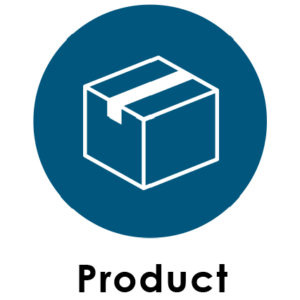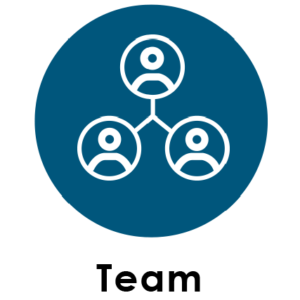Wildcat’s CEO Interview Blog Series features in-depth interviews with CEOs who have successfully traversed the Traction Gap. In each blog, we focus on the CEOs’ experience during one phase of the Traction Gap journey.

We interviewed three key people at ServiceMax — Athani Krishnaprasad, Hari Subramanian, and Dave Yarnold, CEO — about their experiences getting to Minimum Viable Product (MVP).
We define MVP as the most pared-down version of a product that customers are willing to purchase or use. Arriving at MVP marks the first moment at which you have a product that is about to be judged favorably or unfavorably by the larger market.
Wildcat’s Traction Gap Principles at MVP
- Product: Measure your customer engagement and usage rates, not just the number of customers.
- Revenue: Elect revenue metrics carefully and maintain a disciplined focus around them.
- Team: Hire slow, fire fast — quickly remove toxic team members.
- Systems: Keep your burn low — too much funding can cause bad behavior.

Getting to MVP is challenging; it is the gating factor between the startup and customers and revenue. According to Dave, ServiceMax “didn’t wait until our products were perfect to release them. We put out truly skeletal MVPs. Since we had domain expertise, it was easy for us to get it to 40%, rather than 20%, but that’s still a lot lower than 100%. We put our products in front of customers and adopted a fast innovation model. We were able to quickly catch whatever gaps there were, so we were able to beat entrepreneurs that were trying to make their product perfect before going to market.”
“However, this wasn’t an easy strategy,” said Dave. “Our customers were not always happy with us. It put a lot of pressure on our relationships within the company. Our marketing folks needed customers that were thrilled and wanted to talk about their experiences, but they didn’t always have that. Our professional services folks were pissed because things were breaking that shouldn’t break.”

This aggressive approach meant that ServiceMax had to always be selling as hard as they could. “The challenge is to manage that internal turmoil and keep the company focused on the big picture,” said Dave. “We made sure our sales team was always selling the next set of deals. It’s a delicate balance that requires strong management, but we were performing our best when we were pushing those boundaries.”
And for ServiceMax, listening to customers was key to maintaining revenue. “We initiated, we were relentlessly pursuing innovation,” said Athani. This meant “chase the business and figure out what the market is looking for.” ServiceMax combined their sales efforts and had everyone from the inside sales team to their lead development guys making calls. They would meet almost every week to ask what they were hearing, and then, “We’d tweak the message and add to the product as we saw different influences on the market.”
On its journey to MVP, ServiceMax found that the company vision was key. “You have to tell customers about your vision for the company,” said Dave. “It needed to be big, and bold, and differentiated. You can’t just show up and talk to a business leader about all the great stuff that you’re building in your product. It’s got to be a lot more than that, it has to be why you will exist five, or ten, years from now. That’s different than why you have the coolest thing in your space. A lot of companies are very proud of their product, and I was always very proud of our product, but I was also careful to talk about more than just the product, whether it was the value we were delivering, or how we were actually building a business, not just a product.”

Such dynamic and bold approaches to product and revenue requires a killer team. ServiceMax realized this and was very careful about who they brought on board. “There was a long period of time,” Dave said, “where anybody who was hired had to get through me face-to-face, in person.” We asked Dave to reveal his strategy for determining if someone was right. “First, I’d put myself in my customer’s shoes and ask, ‘would I want to engage with this person, if I was a customer?’ If I was interested in you and we were having an intelligent conversation, great. If we were having a discussion and I couldn’t wait for it to be over, I’m not going to hire you, because that’s probably how my customer is going to feel. If I couldn’t get past that, then forget it.”
As they grew, it got harder and harder to meet with everyone in person, but Dave stuck it out as long as he could. “There’s nothing more important than the caliber of the people that you hire,” he said. “The longer you can keep that bar high, it just scales, and it forms the core of your company. The bigger you can make that root structure the better, especially early on.”
What if hiring is proving tricky? The clock is ticking, and you desperately need help? Stay patient, said Hari. “Never, ever hire out of desperation.” You’ll regret it.
Hiring across different countries and time zones was something that ServiceMax had to embrace. They had engineering in Bangalore and business functions in the US. What made a big difference, said Dave, is “we hired the team as employees, rather than contractors.” They brought them into the ServiceMax culture and made them feel invested. Executives visited the Indian office regularly. “It didn’t feel like we were two separate teams,” said Dave. “We built a ton of alignment and trust.”
Another thing that did wonders for company morale was ServiceMax’s internal ‘Top 40’ chart, that recognized top performers across the whole company. At the end of the year, the company’s top 40 (drawn equally from every department) would get to take an end-of-year trip. “A couple of engineers from India made the top 40,” said Dave, “and when they got to go to Cancun, their families were literally in tears, that this company would do this.”
Founder Team Takeaways at MVP
Product
- Be willing to put out “truly skeletal MVPs” as part of an agile methodology — if you can take the possible heat of customer dissatisfaction and internal discontent.
Revenue
- Listen to your customers and let them drive innovation.
- Communicate to people you’re building a business, not just a product. Talk about where you’ll be in two, five or ten years.
Team
- Take hiring very seriously. Try and stick to this even as you scale. Never hire out of desperation.
- Even if you’re hiring on different continents, bring people in. Make them feel like employees, not contractors.
- Get creative and ambitious with rewarding top performers.
ServiceMax is the leading provider of Field Service Management Software for equipment manufacturers and service providers. In addition, ServiceMax provides service execution solutions for operators in asset-intensive industries. In 2016, ServiceMax was acquired by GE Digital for $915M. In December 2018, SilverLake, a private equity firm, acquired a majority interest in the company from GE Digital.



